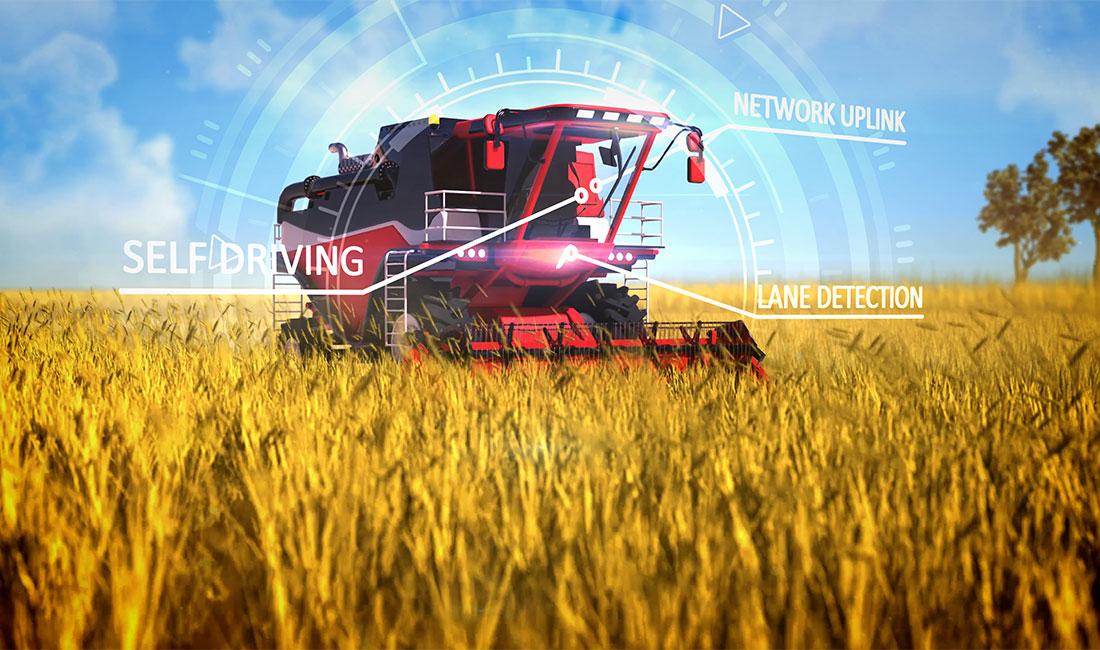Attention
This website is best viewed in portrait mode.
Publication Name: Autocarpro.in
Date: June 27, 2023
Tata Elxsi to bring autonomous vehicle technology to India's Infrastructure

Tata Elxsi, the design and technology services provider, is bringing its global intelligence operator assistance system to India. The system, which is used in passenger and commercial vehicles, will be deployed in geo-fenced sectors including mining, ports, agriculture, and airports. The company is already in discussions with a number of infrastructure-related companies to deploy or modify their existing vehicles to make them more autonomous and operationally secure.
Dr. Gopinath Selvaraj, Practice Head of Autonomous Driving, ADAS, and Active Safety Group, Transportation Business Unit at Tata Elxsi said that the intelligence operator assistance system (IOAS), particularly in the context of the 3D surround view is "gaining traction in India.” He added that this system provides a 360-degree vision of the terrain and obstacles, allowing vehicles to move around more easily and safely with the help of sensors attached to the bottom of vehicles that provide alerts about obstacles beneath them. This means that drivers do not have to get out of the vehicle to see what is in their way, improving safety and efficiency.
The company noted that in mines, where people and equipment need to be moved quickly and safely, remote operation is a valuable tool. This is especially true in remote locations, where access to certain areas can be time-consuming. Additionally, remote operation can be used to bring in autonomous equipment to quickly clear an area after an explosion, for example, before the fumes have dissipated. Also, the benefits of remote operation are similar in the construction industry. Both mines and construction sites require heavy machinery such as excavators, wheel loaders, compactors, and haulers, which can all be operated remotely. However, construction machinery is more mobile than mining machinery, so a more adaptable system is required that can operate without established on-site infrastructure.
The top executive added that the autonomous level for off-road vehicles in India is currently at around zero, or L1. However, there has been a recent increase in the use of sensors such as cameras and LIDARS (laser-based sensors) to create high-definition maps that allow vehicles to move around obstacles and difficult terrain. While human-led operations are still necessary at this stage, he expects to see a lot of L2+ systems in the next couple of years, particularly in precise mining operations and at ports and airports.
Selvaraj highlighted that Tata Elxsi is getting a lot of inquiries for usages at ports such as containers or payloads from one point to another for loading and unloading of goods, among others. Customers also want to know if their existing vehicles can be modified and turned into more autonomous vehicles. In a similar vein, the business is seeing demand from airports and airlines for a variety of tasks, including the handling of luggage or packages, in addition to providing last-mile connectivity for travellers inside the airport terminal. Many of these tasks can be completed without the need for a driver to direct the vehicles, he continued.
Tata Elxsi, like some of its competitors, has developed an entire software stack from scratch for passenger vehicles (PVs) and commercial vehicles (CVs). The software has been licensed to some original equipment manufacturers (OEMs) in Germany, where it is being tested for autonomous driving on public roads and on tracks. "We've found this autonomy software is not only applicable for the passenger vehicle segment," added Selvaraj, "We thought this solution should be applicable even for the off-road segment."
As per an internal estimation by the company, until 2026, autonomous off-highway equipment is expected to expand at a 28.7% compound annual growth rate (CAGR). As a result, OEMs and Tier-1 suppliers are developing robust solutions with a mix of capabilities and functionality for operator assistance. Electric off-highway vehicles needs have increased due to lower maintenance costs, more reliable operation, and zero tailpipe emissions. However, as architectural complexity and computational demands grow, solutions that balance performance and cost-effectiveness will be required.
Precision remains key
Further pointing out the use of LIDAR and other technologies in the area of precise mining, Selvaraj explains that it involves the use of data and analytics to identify and extract minerals more efficiently and with less environmental impact. For example, LIDAR can be used to map the subsurface of a mine site, which can help miners identify the location of rare earth metals without harming them. This is becoming increasingly important as the demand for these metals grows, due to the rapid adoption of electric vehicles. A similar application of technology is also being adopted in precision farming equipment. This involves using data and analytics to optimise crop yields and reduce the use of pesticides and fertilisers.
To conclude, as India’s infrastructure companies increasingly use data and analytics, it transforms the way the industry operates, taking it closer to the US$ 5 trillion economy by the end of this decade.




